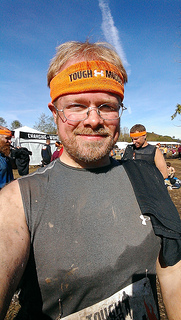A funny question came up in Bible study the other day, what if the earth stopped spinning? Would we be flung into space? Well here is my 2:00am off the cuff, seat of the pants, fly by night, and any other cheesy saying, answer.
Escape velocity of the Earth due to gravity = 11.2 km / s
Maximum tangential velocity of the Earth (at the Equator) due to the Earthâs rotation = .46 km / s
If the Earth suddenly stopped spinning we would not have nearly enough speed to reach orbit or escape into space (horizontal speed of .46 km/s vs the required 11.2 km/s). Also, if we were just on the surface (walking around as we often do), we would never actually leave because gravity will still be pulling down on us, so we would probably just fall over and roll for quite a while. In order to escape there needs to be un upward force as well as a tangential force. Standing on the surface when the earth stopped would not have any upward force, hence, no launch.
If we had been at the height of the top of Mt. Rainier (4392 meters) it would take about 30 seconds to free fall to the surface. If the earth stopped rotating while we were standing on the top we would have an initial horizontal velocity of about 230 m / s (since we are about halfway between the equator and the north pole) and travel at that speed until we hit ground after 30 seconds of free fall (meaning we would travel almost 6900 m or about 4.3 miles) and land near the base of the snow line (not very far) - still at an elevation of about 2200 meters (more than halfway up Rainier).
Now lets say we had been on the roof of Seattleâs tallest building: the Bank of America Tower at 285m. If the Earth stopped spinning we would be flung to the east at 230 m / s and land about 7.6 seconds later (the free fall time) and 1750 meters away (landing about 4 blocks West of Garfield High School).
Now what if we were just standing on the ground (pavement?). As a rough estimate we can assume a high coefficient of friction between your shoes and the pavement, say .9. Well I have a mass around 80 kilograms so the frictional force (assuming the .9 coefficient of friction) would be just over 700 Netwons. If I was able to keep upright with my feet on the ground (remember we said we wouldnât just fly off the surface because gravity still pulls us down and we would need some sort of upward force to get us off the ground) that means I would have a deceleration of about 8.8 m / s / s. With this deceleration, it would take approximately 26 seconds to come to a stop. In that time, I would have skidded about 3000 meters (about 1.8 miles) or the approximate distance from one end of Stanley Park (Vancouver, BC) to the other.
But the chances are I wouldnt be able to stay on my feet. I would probably fall over and tumble reducing my coefficient of friction. Lets assume it is reduced to .4 (no idea what it should actually be). With a coefficient of friction at .4, my frictional force would be around 310N. My deceleration would therefore be about 4 m / s / s. With my initial velocity of 230 m/s, it would take nearly 1 minute to roll to a stop. In that time I will have stumbled about 6600 meters (about 4 miles). I could roll from home plate at Safeco Field across I-90 to Mercer Island.
What is interesting to note is that skidding on the ground will have you travel a greater distance than falling off the Bank of America Tower. For all the new physics students out there, can you tell me why that is? Can you tell me why falling off of Mount Rainier takes half the time as the stumbling situation but goes a farther distance?
So how is that for a random physics lesson?
Map imagery from Google Earth
? ????? ??? ?????? ???? ????? ??????? ??? ????.


Recent Comments